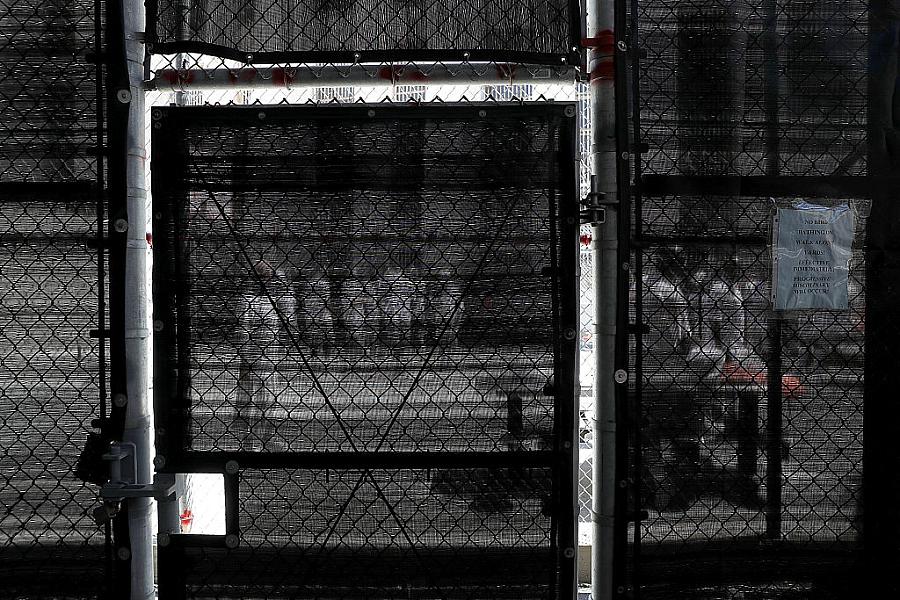Two journalists share how they coped while reporting on Oklahoma’s barbaric death row

Photo by Justin Sullivan/Getty Images
Death row is cruel anywhere, but in Oklahoma it’s medieval-level barbaric. The men spend 23 hours a day, alone, in windowless, subterranean cells. If they do get a visitor, they can’t hug or touch them. Amnesty International recently compared it being “buried alive.”
The unit also operates almost like a conveyor belt. Thirty-five days before their scheduled execution, men are physically moved, cell by cell, closer to the execution chamber.
When we first heard about this, we were shocked by the sheer level of barbarity. We wanted to understand what this kind of system does to the human beings within it, as well as their loved ones on the outside. So, we decided to follow three men, in real time, as they navigated their last 35 days on the unit.
The one thing the death watch cells did afford to the men was unlimited access to the phones. So nearly every day, we talked to them. At first, our conversations were mainly focused on their immediate reality — their transitions to the death cell, their thoughts about their impending executions. But gradually, as we got to know each man better, our conversations veered towards their pasts, their relationships with their families, the worlds they created in their minds that allowed them to survive.
From the outset, we anticipated this project would be difficult, emotionally. We knew that our relationships with these men had a fixed end date, and that the structure of the story meant that we would have to bear witness to the death. That fact alone was daunting.
What we didn’t anticipate was the extent to which our lives would become entwined with the three men, and how difficult it would be to create and maintain boundaries that felt both journalistically and morally ethical.
The deeper we got to know them, the more the men grew to depend on us for companionship and emotional support. They considered us as friends, and to some extent, we did too, which is definitely not the typical journalist-subject relationship.
This ethical dilemma came into strongest relief with Wade Lay. While we were reporting, Wade was granted a stay, which meant his execution was pushed back, indefinitely. So unlike Bigler Stouffer and Donald Grant, we spent nearly a year speaking to Wade. He’d call us multiple times a day; if we didn’t pick up, he’d say, through tears, that he thought we’d abandoned him. And we knew he meant it: Wade is schizophrenic and suffers from paranoia. So, when he said things like this, it broke our hearts. We were terrified he’d do something to hurt himself. Even though we knew our job wasn’t to provide therapy or battle Oklahoma’s penal system on his behalf, we couldn’t help but feel immense guilt.
Overtime, this type of sustained emotional turmoil led to burnout. While creating the actual story, we had to balance listening to hours and hours of recorded tape, while managing Wade’s calls in real time. Ellie had trouble sleeping and difficulty focusing on her other stories. Thankfully, we had each other to talk to about this. This was the type of story where having a reporting partner was absolutely essential. Together, we decided we needed to prioritize our own mental health, and take a break from speaking to Wade.
Navigating the harrowing landscape of reporting on individuals facing execution on death row in Oklahoma was not only emotionally taxing but also took a significant toll on our mental health as journalists. As we grappled with the enduring effects of bearing witness to their suffering and impending fates and the added pressure of being some of their only support systems, we made sure to take constant breaks. The daily exposure to their stories, coupled with the weight of knowing that our relationships with them had a fixed end date, inflicted a deep emotional burden. The relentless cycle of listening to recorded tapes, managing real-time calls, and confronting the stark realities of the death penalty system exacerbated feelings of burnout and emotional exhaustion. In addition to taking breaks, we made sure we had something to look forward to at the end of the day — a walk in the park, a dinner at a restaurant or a bubble bath.
Despite our commitment to the story, we ultimately realized the imperative of prioritizing our own mental well-being and engaging in open dialogue with each other about the challenges we faced. We became each other's emotional support friend during this time, and reminded each other of the need to have fun outside of the story. This process of self-care became essential for preserving our resilience and sustaining our ability to bear witness to the humanity within this cold machinery of capital punishment.
This space actually allowed us to really reflect on what the story was about, namely the humanity within this cold capital punishment machinery. It’s easy to define these men by their crimes. The lack of coverage makes it easy for average Americans not to recognize them as full, complex people, with pasts, families, relationships, and emotions that defy easy categorization. Our story, “Father Forgive Them,” tries to push past this. It challenges the audience to bear witness to how we treat fellow human beings.


